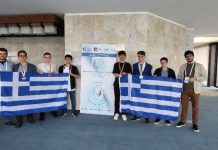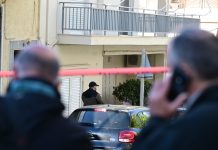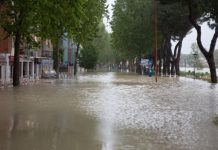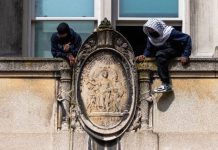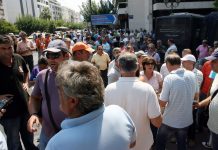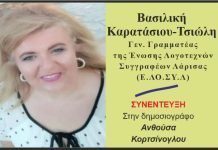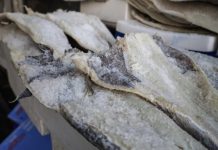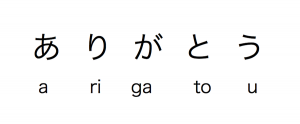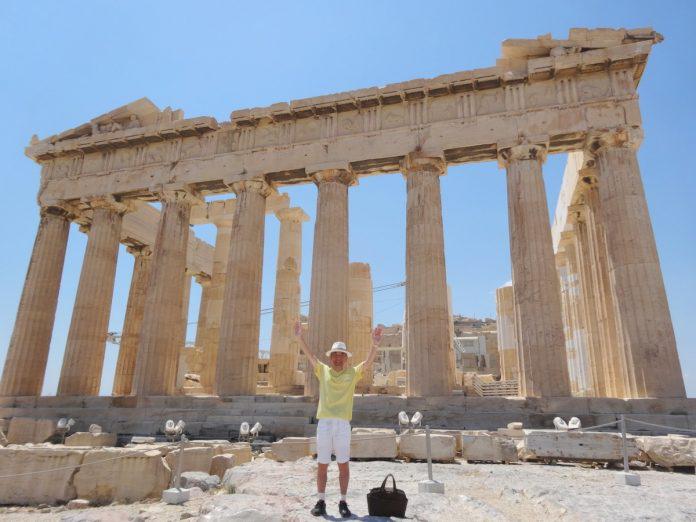

lenakyropoulos@gmail.com
Hello everyone! Kalispera from beautiful Greece. Today, P.E.R.S.O.N.A.L.I.T.I.E.S. is traveling to Japan and to a very special person, Mr. Taro Aizu.
Taro Aizu was born in the Aizu region of Fukushima prefecture, Japan. He has been writing haiku for 20 years in Japanese, gogyoshi for 12 years in Japanese, and both for 5 years in English and French. He published a poetry book titled, ”My Fukushima” in three languages in 2014, Haiku collection “Our Lovely Earth” in 2016, Haibun collection “My Trip to Crete” in 2019 and Gogyoshi collection “The Second Anthology of World Gogyoshi” in 2020.
Let’s run back to history and to meet the first Gogyoshi poet ever.
This is a photo of Yosan Tekkan
The first Gogyoshi poet in the world
But What is the real meaning of Gogyoshi?
Like Taro Aizu told us:
Gogyoshi (五行詩) is five-line poem with a title. First, a Japanese poet, Tekkan Yosano published the original form(7-5 syllables) of Gogyoshi in “Kashi no ha” in 1910. But no poets had written it for 90 years since then. In 2000’s, some Japanese poets began writing modern Gogyoshi(free syllables).”Go” means five and “gyo” means lines and “shi” means a poem. A poem written in five lines with a title is gogyoshi’s defining characteristic and only rule. In comparing gogyoshi with other Japanese and world five-line poetic forms, it is the freest among such forms. Gogyoshi incorporates no syllabic or line-breaks and no rhyme scheme.But Gogyoshi must have a title,though Tanka and Gogyohka has no title. Mariko Sumikura used the English word “Gogyoshi “ for the first time in 2009.
The most amazing he has achieved is actually to link over 150 nationalities throw the Gogyoshi poetry project and to make this diversity the culture bridge of the human civilisation. What about to meet some of them?
Iakovos Thiras Karamolegkos ( Greece )
He is a Greek poet. He was born in 1985 (10 February) in Santorini. He has studied Social Theology, Philosophy and Archaeology. He loves travelling, playing and watching basketball, feeding his cats, reading and writing. He lives and works in Santorini.
Planet Earth is a rosery.
That is tightened by thorns.
But it’s still a garden.
Keep the flowers of it
And the stars that you meet.
H ΓΗ
Ροδώνας η Γη
Που τον πνίγουν τ’ αγκάθια.
Μα κι έτσι κήπος.
Τ’ άνθη μονάχα κράτα
Και τ’ άστρα σ’ όποια στράτα.
Lina Forsdahl ( Sweden )
Is born in Poland and lives near the sea in the south of Sweden since 1981. She shows her art in Europe, USA and Asia. Also permanently in museum, Denmark and Korea. Her art is represented in 5 art books, many magazines and catalogs. She has also many awards and trophies.
BEAUTY IN THE EARTH
The Earth needs a drop of water.
When hot rays of the sun
Caress my green leaves.
Then for every drop of water,
I become glossy and beautiful.
VACKER PÅ JORDEN
Jorden behöver en droppe vatten.
När solens heta strålar,
Smeker mina gröna blad.
Just då, så längtar jag efter en droppe vatten.
Så jag kan bli glad och blankande vacker.
She is performing classical pianist/cellist trained in Taiwan, NZ, UK, also studied computer science/teaching. Her 2019 projects: ‘War & Peace’ Arts & Music Festival (May), 100 Years Journey (October). She started writing poems in June 2020. 21 of her 400+ poems (in translation to 20 languages) will soon be published by several journals.
HEALING EARTH
Voices found
Across borders
Collective chant
Healing Earth
Our only hope.
治癒地球
不分國界,人類
共同的心聲,我們
一起唱著古老的歌曲
但願地球早日康復
那是至今唯一的希望

As a retiree from a government office and plenty of free time available, I found my journey to writing poetry. With no experience and technical know-how on poetry writing, I ventured into writing gosyoshi. Being a simple poem, I enjoy writing gogyoshi. Now I am writing other forms of poetry in various poetry groups.
OUR MOTHER FOR ALL GENERATIONS
Kindness and generosity
Given to all generations
Boundless love
Is all we felt from Mother Earth
A true mother forever.
ATING INA PARA SA LAHAT NG HENERASYON
Kabutihan at pagiging bukas palad
Binigay sa lahat ng henerasyon
Walang hanggang pagmamahal
Ang lahat naming nadama kay inang lupa
Isang tunay na ina magpakailan man.

She’s a Brazilian visual artist who lives in the southeast of the country. Art, photography, education and projects are her life and work, besides her family. Nowadays she formed a studio gallery to work in home during the pandemic. Life is beautiful and artists from all the world are welcoming.
MY PLANET
The Earth is my site.
The nature is my local.
The calm is my right.
And family is my heart.
Life is beautiful.
MEU PLANETA
A Terra é meu sítio.
A natureza é meu lugar.
A calma é meu direito.
A família é meu coração.
A vida é bonita.
Peter Smith
Retired from a career as a business executive, Peter Smith has turned his attention to a more artistic and outdoor life. He is an expert at the Japanese bamboo flute, the shakuhachi, and enjoys playing it along the ocean and in the garden. He lives on Vancouver Island, Canada.

DANDELION SEED BALL
Made from the earth
Round and ready to burst
Riveting in its delicacy
A momentary carelessness
And it will fall apart
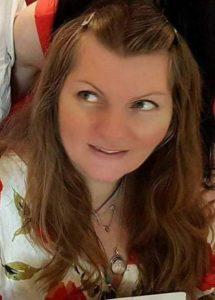
We have spoken last days and i really felt on my bone his feelings when he saw for the first time Parthenon…Acropolis… I would like to describe it throw his eyes, because of this in the following text you will read everything he thought and felt by his own words, translated to Japanese, English and Greek.
ギリシャ俳文日記(1)
7月23日
日本からモスクワ経由でアテネ国際空港に深夜到着すると、疲れていたせいか、私は空港近くのホテルで一晩たっぷりと眠った。そして翌朝、空港から地下鉄に乗り、モナスティラキ駅で降り、ホテルに向かった。スーツケースをホテルの部屋に置くとすぐに、私はさっそく歩いてアクロポリスの丘へ向かった。地図を見ながら、地元のギリシャ人に英語で道を聞きながら、雲1つない青空と真夏の太陽の下、アクロポリスの頂上を目指し、ゆっくりゆっくり登って行った。
頂上のパルテノン神殿は、中学生1年生の頃社会科の教科書でその写真を初めて見た時、いつかここに行ってみたいなあと私が夢見たところだった。しかしそれから高校、大学、仕事、そして家庭と忙しく生きている間、私はその夢をいつのまにか忘れてしまった。そしてそのあいだに何と約50年という月日が過ぎ去っていた。でも3年前に定年退職をして心にゆとりができたせいか、私はその中学時代の夢を、時々思い出すようになった。そして去年ついにギリシャ旅行を計画し、最初に行くところはパルテノン神殿と決めた。
道は埃っぽいけれど、空気が乾いているせいか、汗は全然流れない。それどころか、そよ風がエーゲ海から絶えず吹いて来る。サングラスをかけた大勢の外国人観光客に混じって、私は石段を登りながらやっと頂上に辿り着いた。目の前には神殿の太い円柱が何本も並んでいる。想像していたよりもはるかに巨大な円柱が青空に向かって堂々と聳えている。
五十年パルテノンの柱かな
Haibun journal of Greece trip (1)
July23
Very late on the previous night, I arrived at Athens International Airport via Moscow from Japan and had a sound sleep in a hotel by the airport. Early in the morning, I pulled my suitcase along the streets from the hotel and took a metro for about 40 minutes to Monastiraki Station and walked to a hotel.
As soon as I put my suitcase in my hotel room near the station, I walked to the Acropolis and started climbing. The hot sun was shining over me in the blue, cloudless sky, but sweat didn’t flow down on my face as the air was very dry and the breeze from the sea was blowing around me.
When I reached the top of the hill about 20 minutes later, there it was, the Parthenon, a huge stone temple with columns large and tall. They were quite different from the columns in the photo I had first seen in my high school history textbook. Gazing at the picture 50 years ago, I had dreamed of visiting the Parthenon someday. But I had forgotten the dream for a long time as I had been busy spending every day life. However, I remembered it two years ago as I retired my job and was very free every day.
I planned to visit Greece last summer and I have finished climbing the Acropolis now.
I stand in front of the Parthenon
…My dream’s come true.
Το ημερολόγιο ταξίδι haibun της Ελλάδας
23 Ιουλίου
Πολύ αργά το προηγούμενο βράδυ, έφτασα στο Διεθνές Αεροδρόμιο της Αθήνας μέσω Μόσχας από Ιαπωνία και πήρα ένα καλό ύπνο σε ένα ξενοδοχείο δίπλα στο αεροδρόμιο. Νωρίς το πρωί, τράβηξα τη βαλίτσα μου κατά μήκος των δρόμων από το ξενοδοχείο και πήρα το μετρό για περίπου 40 λεπτά για το σταθμό Μοναστηράκι και πήγα σε ένα ξενοδοχείο.
Αμέσως μόλις έβαλα τη βαλίτσα μου στο δωμάτιο του ξενοδοχείου μου κοντά στο σταθμό, πήγα στην Ακρόπολη και άρχισα να ανεβαίνω. Ο ζεστός ήλιος έλαμπε από πάνω μου μέσα στον γαλάζιο ασυννέφιαστο ουρανό, αλλά ο ιδρώτας δεν έπεφτε στο πρόσωπό μου καθώς ο αέρας ήταν πολύ ξηρός και το αεράκι από τη θάλασσα φυσούσε γύρω μου.
Όταν έφτασα στην κορυφή του λόφου, περίπου 20 λεπτά αργότερα, εκεί ήταν ο Παρθενώνας , ένας τεράστιος πέτρινος ναός με μεγάλους και ψηλούς κίονες. Ήταν πολύ διαφορετικοί από τις στήλες της φωτογραφίας που είχα δει για πρώτη φορά στο βιβλίο ιστορίας μου στο γυμνάσιο. Βλέποντας την εικόνα πριν από 50 χρόνια, ονειρευόμουν να επισκεφτώ τον Παρθενώνα κάποια μέρα. Αλλά είχα ξεχάσει το όνειρο εδώ και πολύ καιρό, καθώς ήμουν απασχολημένος σπαταλώντας την κάθε μέρα της ζωής. Ωστόσο, το θυμήθηκα πριν από δύο χρόνια, καθώς συνταξιοδοτήθηκα από τη δουλειά μου και είχα πολύ ελεύθερο χρόνο κάθε μέρα. Πέρυσι το καλοκαίρι σχεδίασα να επισκεφτώ την Ελλάδα και τώρα τελείωσα την ανάβαση στην Ακρόπολη.
Στέκομαι
μπροστά στον Παρθενώνα
… Τα όνειρά μου πραγματοποιήθηκαν.
俳文とは何か
この本は2016年7月23日から8月2日までギリシャ旅行をした時の思い出を俳文形式で書いた日記文学です。私はそれを日本語と英語で書き、私の友人、ビビアンさんがそれをギリシャ語に翻訳してくれました。彼女はクレタ島に住むギリシャ人の私の友人です。
ところでその俳文形式とはいったい何でしょうか。俳文とは散文と俳句が組み合わさった文章です。私は基本的に1つの散文に1つの俳句を組み合わせてみました。そのようにした理由は、読者が俳句だけを読んでもその意味をよく理解できないからです。普通の日本人でも、日本語の俳句を1つ読んでその意味がすぐに理解できるでしょうか。よくわからなくて感動できない場合のほうが多いんじゃないでしょうか。それでは普通の日本人や外国人が俳句をもっと理解できるようにするためには、どうしたらよいのでしょうか。
私は俳句の歴史をさかのぼっていろいろ考えてみたら、松尾芭蕉の「奥の細道」の俳文を思い出しました。あの有名な「しずかさや岩にしみ入る蝉の声」も、前の文章がなかったら、理解しにくいです。やっぱり、その俳句が生まれた状況を、前もって説明しておいた方が読者は理解しやすい。そう考えて私は散文から俳句へと導く形式、すなわち俳文形式を、芭蕉の「奥の細道」から教わり、使ってみることにしました。
しかしやってみると、あまり説明し過ぎても、俳句が散文の要約のようになって余りにもわかりやすくなり、その結果その俳句の底が浅くなり、深い余韻が無くなってしまう。俳句のわかりやすさと深い余韻の両立はたいへん難しい。でも、やってみる価値はあります。俳句のわかりやすさと深い余韻の2つを追求するために、私は今回、この俳文形式を使って、「クレタ島への旅」を日本語と英語で書いてみました。
また文化や自然によって意味が異なってしまう季語には普遍性がないので、特別な意味を与えず、他の言葉と同じように使うことにしました。ただし、切れは俳句の最大の特徴であり、そこに言語の違いを超える普遍性があります。だから日本語の俳句だけではなく、英語の俳句の中でも「…」で表しながら、切れを必ず使わせていただきました。さてこのような考え方に基づいた俳句や俳文ですが、読者の
What is Haibun?
I made a trip to Greece July 23 to August 2 in 2016, then I wrote this haibun(俳文)journal in Japanese and English about nice memories of my trip. My Greek friend, Vivian Throes translated it into Greek. Finally I edited the haibun diary in three languages.
So, what is haibun? It is a Japanese style of diary literature. Haibun combines prose and haiku. I combined prose and haiku in this diary. Why? It’s because readers cannot understand the meaning of haiku well when they read only haiku. Even most of Japanese readers cannot understand haiku well when they read only haiku. How should I write haiku so that normal Japanese and foreigners can understand it better?
I considered a Japanese history of Haiku. Then I found that famous haibun called “Narrow paths to the deep North” by Bashō. In his haibun, he wrote the masterpiece, “Silence … voices of cicadas penetrate the rock.” But it would be difficult to understand the haiku if it didn’t have the prose before it. As it has the prose before it, it’s easier to understand it. The prose introduces readers to an adequate understanding of the haiku. So, I decided to use haibun style, imitating Bashō.
I tried haibun in my trip diary. But it was too easy to understand the meaning of the haiku as the prose explicated the haiku too much and the haiku became a summary of the prose. In result, the haiku lacked the deep emotion. It’s very difficult to balance the understandability and the deep emotion of haiku. But it’s very worthy trying to balance them. I dared to write “My trip to Crete” by haibun .
Moreover, I didn’t use “kigo”(季語) (meaning season words) in my haiku because seasons are very different from each other in each country. It has no universality all over the world. But I always used “kire”(切れ) meaning a cutting or a break in my haiku, because it is the absolute characteristic of haiku. It has universality all over the world, crossing borders. This way, I tried some changes in my haiku and haibun.
Τι είναι το Haibun;
Tταξίδεψα στην Ελλάδα το 2016, από 23 Ιουλίου έως 2 Αυγούστου. Έπειτα έγραψα αυτό το ημερολόγιο haibun (俳文) , για τις ωραίες αναμνήσεις του ταξιδιού μου, στα ιαπωνικά και στα αγγλικά. Μεταφράστηκε στην ελληνική γλώσσα από την φίλη μου, Βίβιαν Θρόες. Τέλος, δημοσίευσα το ημερολόγιο haibun σε τρεις γλώσσες.

Something that really touched me inside is his describtion about his worked called Fukushima.A Fukushima nuclear plant caused a hydrogen explosion on March 12, 2011 after a huge earthquake and the large tsunami on March 11. That summer he went to his hometown, Fukushima, for the first time since the disaster. There he happened to see his nephews hanging dosimeters around their necks. The scene gave him a great shock and that experience inspired him to write “My hometown, Fukushima”.
He wrote “My hometown, Fukushima” in English in January and in French in March and then in Japanese in April, 2012. “My hometown, Fukushima” was translated into 20 languages by his Facebook friends all over the world. The gogyoshi of Takizakura was translated into 35 languages in 2013 and he published, “私の福島” in Japanese, “My Fukushima” in English and “Mon Fukushima” in French with German, Italian, Spanish and Portuguese translations by Amazon Kindle. At last, in 2014, he published a poetry book, “わが Fukushima, My Fukushima, Mon Fukushima”, written in three languages, Japanese, English and French.
European and Brazilian artists held exhibitions inspired by his poems in the Netherlands, Brazil, Germany, Portugal, Spain, France, and South Korea between 2012 and 2015.
- Published books:
- “いとしい地球よ” in Japanese in September, 2005.
“The Lovely Earth” in English in January, 2011
“La Terre Précieuse” in French in July, 2011.
- Kindle collections of haiku and gogyoshi, “My Fukushima” in 7 languages, Japanese, English, French, Portuguese, Spanish, Italian and German in January, 2013.
- “わが福島My Fukushima Mon Fukushima” in May, 2014
- “This Precious Earth” Kindle electronic book in January,2016
- Haiku collection “Our Lovely Earth” in July, 2016.
- Haibun collection “My Trip to Crete” in May, 2019.
- Gogyoshi collection “The Second Anthology of World Gogyoshi” in January, 2020.
冬の富士山
眺めれば眺めるほど
心が洗われてくる
真冬の朝の
真っ白い
富士山
FUGI IN WINTER
The more I look at
White Mt. Fuji
In the blue sky
On a cold morning,
The more it cleanses my heart.
(会津太郎、Taro Aizu)
With peace, love and tolerance,
Lena Kyropoulos & Personalities Team



